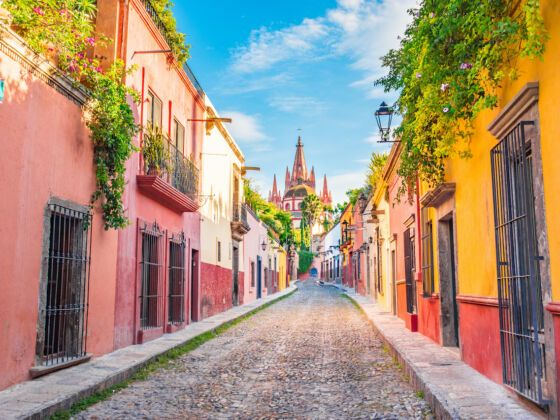Traveling in the era of COVID-19 can feel more like navigating a complex puzzle designed to make you feel stupid. Each country has different rules and regulations governing international travel and tourism, to say nothing of the myriad safety protocols you must keep in mind upon arrival. For US travelers going abroad, it’s especially difficult due to our country’s poor handling of COVID-19 outbreaks. One of the few silver linings, however, is that unlike many countries around the world, Mexico is willing to receive us. But just because we’re allowed to travel there doesn’t exactly mean it’s straightforward, or that we should expect a totally normal experience once we get there, or that there aren’t ethical concerns to consider. Here’s what you should know about safely traveling to Mexico right now.


Everything Americans Need to Know About Traveling to Mexico Right Now
Getting there
Although the land border between Mexico and the US is currently closed to nonessential travel, reaching Mexico by air is allowed. Flights are operating regularly to popular tourist destinations — though on a more limited schedule — and arriving travelers should prepare to face health screenings, temperature checks, and thermographic cameras. A negative COVID-19 test taken prior to arrival is not required.
If, through the airport health screenings, you’re found to have COVID-19 symptoms or a fever, you may be asked to return home or quarantine in Mexico. If you don’t show any COVID-19 symptoms, you will not be required to quarantine for any period of time.
Before actually booking a trip south of the border, however, keep in mind that each Mexican state has a different approach to reopening. They use a “stoplight” system to phase in normal, nonessential activities. “Red” means total lockdown, with only essential activities allowed. “Orange” means hotels, restaurants, barber shops, parks, gyms, and places like supermarkets may open with limited capacity. “Yellow” means all work activities are permitted, though enclosed public spaces must still operate with reduced capacity. “Green” means all economic and social activities may resume as normal.
At the time of publishing, 10 states are designated red, 20 are orange, two are yellow, and one is green. The only yellow states are Chiapas and Chihuahua, and the lone green state is Campeche.
The red states include:
- Guanajuato
- Guerrero
The orange states include:
- Aguascalientes
- Baja California Sur
- Coahuila
- Colima
- Jalisco
- Hidalgo
- Mexico City
- Mexico State
- Michoacan
- Morelos
- Nayarit
- Nuevo Leon
- Oaxaca
- Puebla
- Queretaro
- San Luis Potosí
- Tlaxcala
- Yucatán
- Veracruz
- Zacatecas
The yellow states include:
- Baja California
- Campeche
- Chihuahua
- Durango
- Sinaloa
- Sonora
- Tabasco
- Tamaulipas
- Quintana Roo
The list is updated regularly and reflected in the US Embassy’s official travel advice for Mexico.
What’s open?
Most hotels across Mexico are open and receiving visitors with new safety protocols in place. The availability of rooms, however, will depend on the state’s stoplight color and what capacity limits are allowed.
In red states, hotels are limited in 25 percent occupancy and only for guests working on critical activities. In orange states, hotels are limited to 50 percent capacity while yellow and green states are allowed to operate hotels at full capacity.
As for restaurants, pools, beaches, malls, spas, archeological sites, and more, their status depends on the state’s color within the stoplight system. Most major tourist destinations — including Puerto Vallarta, Playa Del Carmen, Los Cabos, and Mazatlan — are open for tourism with limited capacity.
As always, make sure to check the updated rules and regulations for your destination before departing. Since COVID-19 guidelines change regularly, staying current on your hotel’s policies and the “color” of your state could save you a headache.
Should you travel to Mexico right now?
Travel in general right now is an ethical minefield. On one hand, any travel whatsoever, even domestically, contains some level of risk for contracting or spreading COVID-19. On the other, tourism-dependent economies around the world have been devastated, and certain regions in Mexico have faced massive losses in 2020. Anecdotally, many travelers have reported they received a warm welcome at hotels and restaurants and were able to enjoy beaches and other natural sites without crowds. However, other areas stuck in the orange zone might not take as kindly to tourists compared to those with a yellow designation. It’s definitely not the time to go exploring a remote village with limited medical resources. But if you get a COVID-19 test beforehand, stick to wide-open spaces, patronize hotels and restaurants that are following COVID-19 protocols, and always mask up yourself, Mexico is one of your best bets for a safe, positive international travel experience for the rest of 2021.
A version of this article was previously published on September 28, 2020, and was updated on February 26, 2021, with more information.